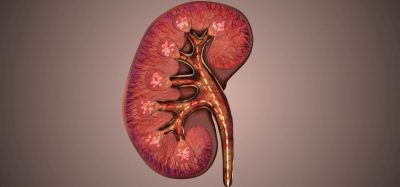Teaching machines to make clinical trials more successful
Posted: 27 April 2016 | | No comments yet
Researchers at are using so-called “machine learning” technologies to predict whether patients will participate in clinical trials…


Recruiting sufficient numbers of participants is a current challenge in medical research that can compromise results or stop some studies altogether.


Yizhao Ni
Now, researchers at Cincinnati Children’s Hospital Medical Centre are using so-called “machine learning” technologies to predict whether patients will participate.
“Challenges with patient recruitment for clinical trials are a major barrier to timely and efficient translational research,” said Yizhao Ni, PhD, lead author and a researcher in the Division of Biomedical Informatics at Cincinnati Children’s. “The ultimate goal of our research is to impact patient recruitment strategies to increase participation in clinical trials, and to help ensure that studies can be completed and the data are meaningful.”
The researchers report that their automated algorithm was significantly better at predicting patient participation response than the programme that simulates current recruitment practices.
In the study, about 60 percent of patients approached with traditional recruitment practices ultimately agreed to participate. Researchers predict that their new automated algorithm could push acceptance rates up to about 72 percent. As Ni and his colleagues further develop and refine the algorithm, their goal is to increase the acceptance rate beyond 72 percent.
The authors worked from previous studies that identified categories of objective and subjective factors that influence successful patient recruitment. Age, race, education, socioeconomic level, financial resources and required time commitment are examples of objective factors. Subjective factors include attitudes about medical research, family influence, seasonality, or whether a person’s health condition has suddenly deteriorated.
The new study confirms that patients are less likely to participate in randomised studies, multi-centre trials, more complex trials, and trials that required follow-up visits. The research also identifies new recruitment challenges that should be analysed in future studies.
Patient-directed recruitment strategies
Even with growing new intelligence on why people accept or decline clinical trial invitations, the researchers indicate it is difficult to manually process this new information in busy medical clinic environments. This makes current recruitment practices somewhat random – with little time or ability to account for individual patient preferences or biases. An automated system capable of analysing and interpreting these factors can also develop precise patient-directed recruitment strategies to improve participation.
The machine-learning algorithm developed by Ni and colleagues analyses, compares and interprets different data sources to predict specific patient decision making. To test their algorithm, researchers collected data from 2010 through 2012 involving clinical trial recruitment in the Emergency Department of Cincinnati Children’s.
Patient recruitment in the Emergency Department is now done on a per-patient-visit basis. Clinical research coordinators attempt to match patients with appropriate clinical studies based on the study’s specific goals and guidelines, and then approach those patients for enrolment.
For purposes of the current study, the researchers attempted to collect data on the Emergency Department’s process. For scoring, each Emergency Department patient invited into a clinical trial was counted as an “encounter”. Patients accepting invitations were labelled as “+1”; decline responses were labelled “-1”. The researchers counted data that included 3,345 patient encounters for a diverse set of 18 different clinical trials.
At the same time, the researchers collected demographic, socioeconomic data and clinical information from different sources to help build patient profiles. This information was fed into the machine learning algorithm, which processed the data through programmes for predictive modelling, comparison, analysis and prediction.
The researchers then compared the effectiveness of their algorithm to a “random-response-prediction programme” that was developed to simulate the current recruiting method in the medical centre’s Emergency Department. Those results were then validated by comparing them to the “acceptance” and “decline” responses recorded from the in-person Emergency Department encounters.









